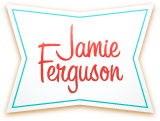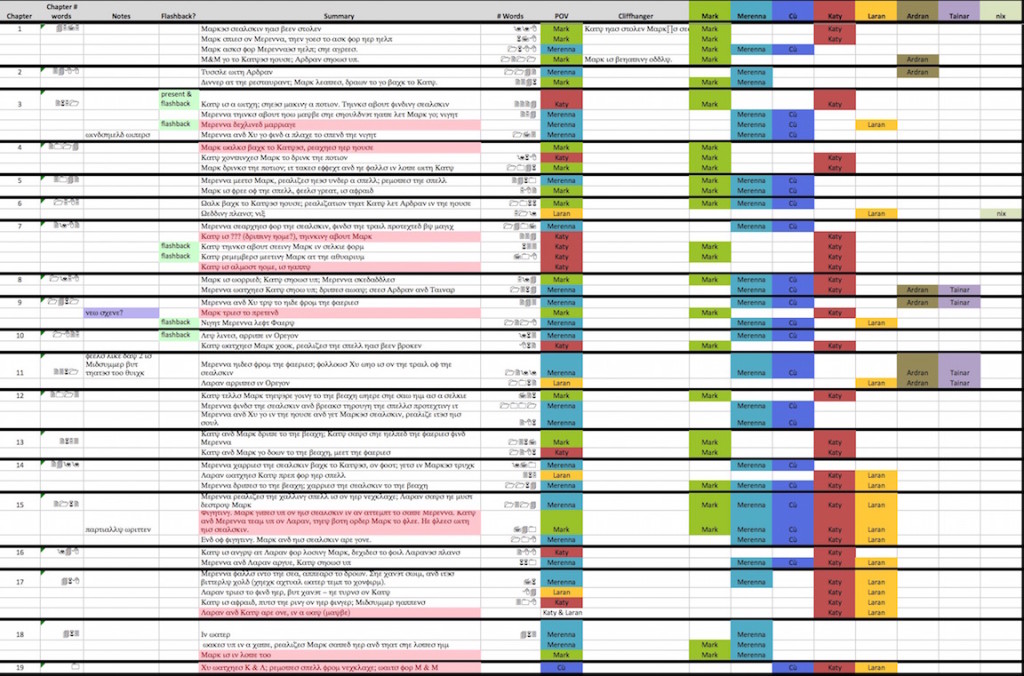Charts and lists and plans
I now have a scene list for the novel, as well as an outline, and it’s been tremendously helpful. In the past I’ve worked with what was essentially a combination of a scene list and an outline, but for this book I wanted to track more details, so I have two separate documents.
My old approach tracked the following:
- chapter
- each scene in the chapter
- which viewpoint each scene was from
- details of what happened in each scene
- chapter cliffhanger
- time/day
That sounds fine and dandy, and it was definitely helpful. But because the details of each scene are listed out, it’s hard to get a high-level feel for what’s going on. This novel has 5 viewpoint characters, only two of whom are main characters, and I wanted to make sure the secondary characters were staying in line and not taking over anywhere in the story.
Here’s what I’ve got right now:
The elements I’m currently tracking are:
- chapter
- # words per chapter
- whether or not the scene is a flashback
- very short summary of each scene
- # words per scene
- whose viewpoint each scene is from
- cliffhanger
- time/day
- which characters are present in each scene
Note that I don’t have all of the details written – for example, I haven’t added the cliffhangers yet. And I may not – I may keep them in the outline.
Seeing the novel represented in this form helped me identify scenes I needed to add (in pink in the chart), and I was able to get a feel for where the story was weak or felt unbalanced. I shuffled several scenes around as a result, and the story feels more complete as a result. I used different colors for each viewpoint character, and that helped identify places where there was too much or too little written from one character’s point of view.
I used to track word count per chapter separately, but I added that to this chart, as well as word count per scene. I always look at the chapter word count because I generally want all the chapters to be roughly the same length. They don’t have to be super close, but if I had a 7,000-word chapter followed by a 2,000-word chapter, I’d want to have a good reason. Otherwise the pacing can feel off to the reader.
I’ve never tracked word count per scene before, so I’m curious to see how helpful this is – but it seems like it could be useful in the same way. I have a chart showing word count per scene by character, where I use different colors to represent the different viewpoint characters. So far it’s interesting, but I don’t know if it’s going to identify anything in this novel since I’m so far along.
I feel much better about where I’m at than I did a week ago. I started with a complete manuscript that I knew needed a lot of work – all the planning and organizing I’ve done has helped me identify exactly what I need to work on. I have tons of notes in the manuscript as well (I use Word and comment balloons), but those are at a lower level. I really needed to see the big picture. I’m planning on finishing the outline later on to make sure I’m covering every tiny detail, but right now I want to start filling in some of the larger holes I’ve identified.


